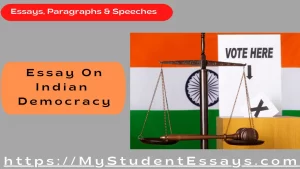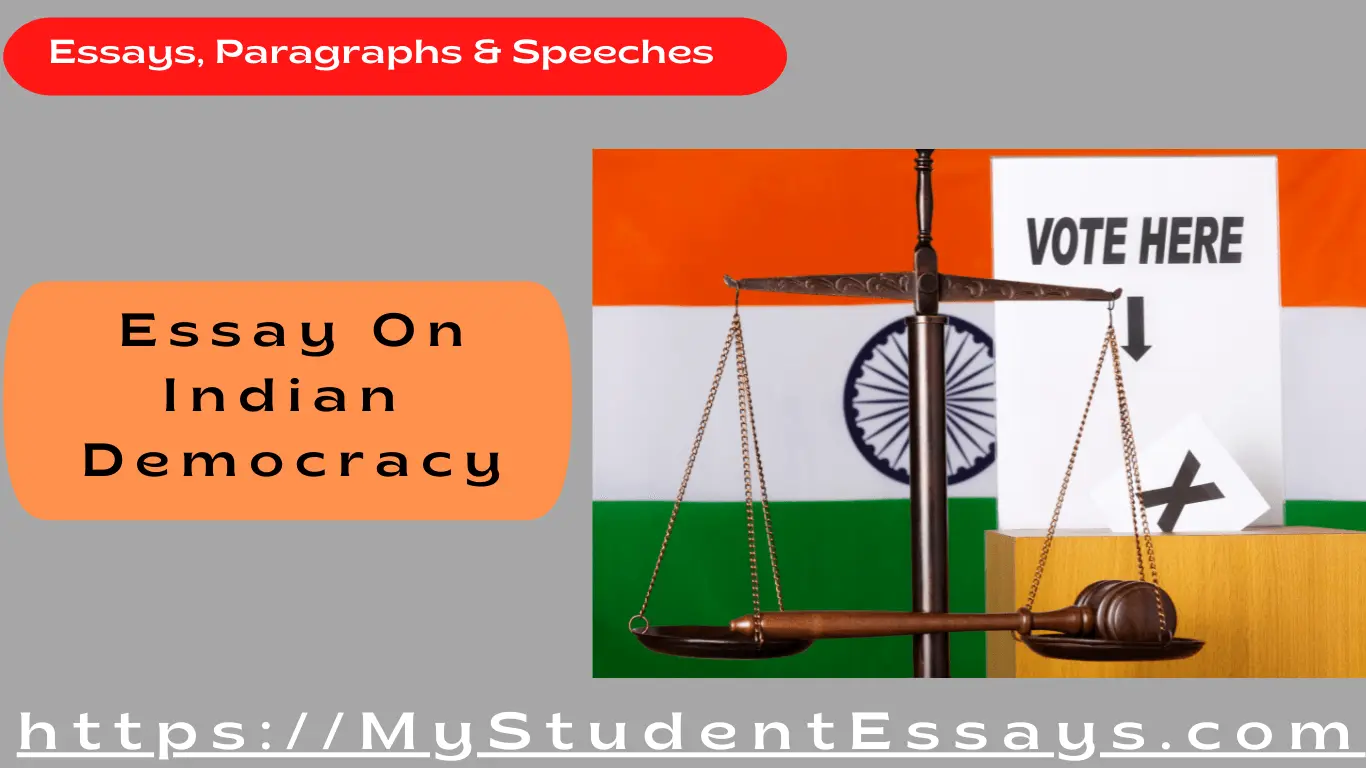India is known as world’s largest democracy. The Indian democracy follows the Indian constitution that talks about fairness, justice, equality and freedom. The following essay talks about Indian Democracy, what are basic features, characteristics of Indian democracy along with how Indian democracy ensure fairness and equality. This essay is quite helpful for children and students.
Essay on Indian Democracy- Basic Features & Characteristics
India is world’s largest democracy. It is a country where people of different religions, languages and culture live together. India has a parliamentary system of government. The Prime Minister is the head of the government and the President is the head of state.

The Constitution of India was adopted on 26 November 1949. It guarantees freedom of speech, religion and expression. The judiciary is independent of the executive and the legislature. India has a federal system of government. The states have their own governments and legislatures. The elections in India are held on the basis of adult suffrage. Every citizen who is 18 years or older can vote. The elections are held every five years. The political parties contest the elections on the basis of their policies and programmes.
>>>> Read Also: ” Essay On Responsibilities of a Good Citizen “
The main political parties in India are the Indian National Congress (INC), the Bharatiya Janata Party (BJP) and the Communist Party of India (CPI). The INC is a centrist party. The BJP is a right-wing party. The CPI is a left-wing party.
India has a mixed economy. The government owns and controls certain sectors of the economy. These include defence, railways, telecommunications and insurance. The private sector is dominant in other sectors of the economy.
The Indian Economy is growing at a rate of 7-8% per year. India is the world’s fastest-growing major economy. India is a member of the BRICS (Brazil, Russia, India, China and South Africa) group of countries.
India is a land of diversity. There are more than 1.3 billion people in India. India is the second most populous country in the world after China. There are 29 states and 7 Union Territories in India. Hindi is the official language of India. English is also an official language of India.
There are 22 scheduled languages in India. These are: Assamese, Bengali, Bodo, Dogri, Gujarati, Hindi, Kannada, Kashmiri, Konkani, Malayalam, Manipuri, Marathi, Nepali, Odia, Punjabi, Sanskrit, Santali, Sindhi, Tamil, Telugu and Urdu.
India is a secular country. There is no state religion in India. People of all religions live in India. Hinduism is the major religion in India. Other religions practiced in India are Islam, Christianity, Sikhism, Buddhism and Jainism.
>>> Related Post: ” Essay on Population Explosion”
Conclusion
India is a democratic country where people of different religions, languages and culture live together in peace and harmony. India has made great progress since Independence in 1947. India is now a major economic power in the world. I am proud to be an Indian citizen. Thank you for listening.
